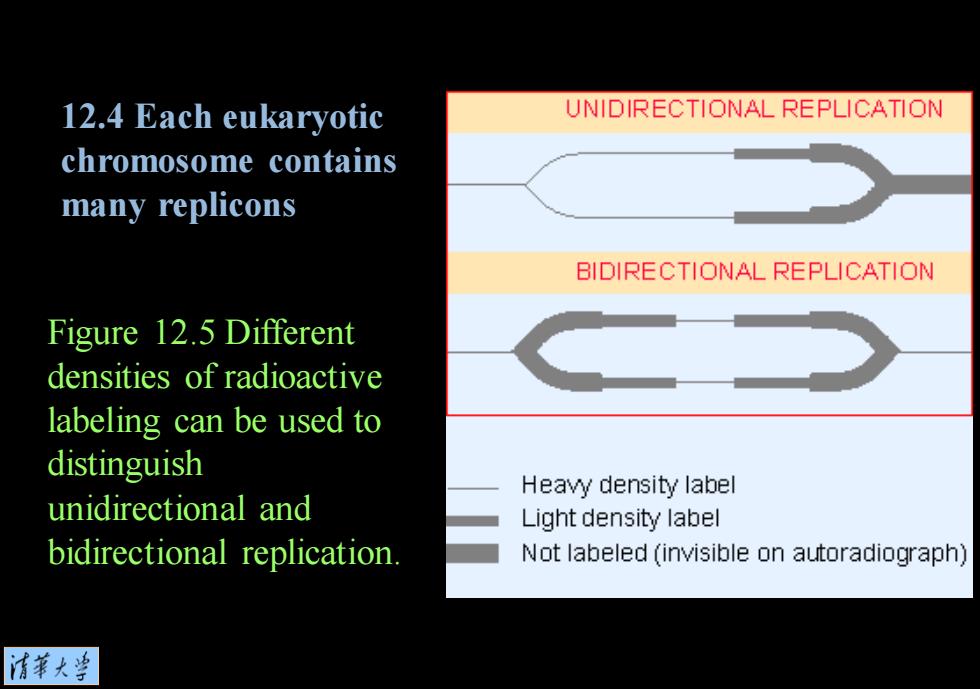
12.4 Each eukaryotic UNIDIRECTIONAL REPLICATION chromosome contains many replicons BIDIRECTIONAL REPLICATION Figure 12.5 Different densities of radioactive labeling can be used to distinguish Heavy density label unidirectional and Light density label bidirectional replication. Not labeled(invisible on autoradiograph) 情華大当
Figure 12.5 Different densities of radioactive labeling can be used to distinguish unidirectional and bidirectional replication. 12.4 Each eukaryotic chromosome contains many replicons
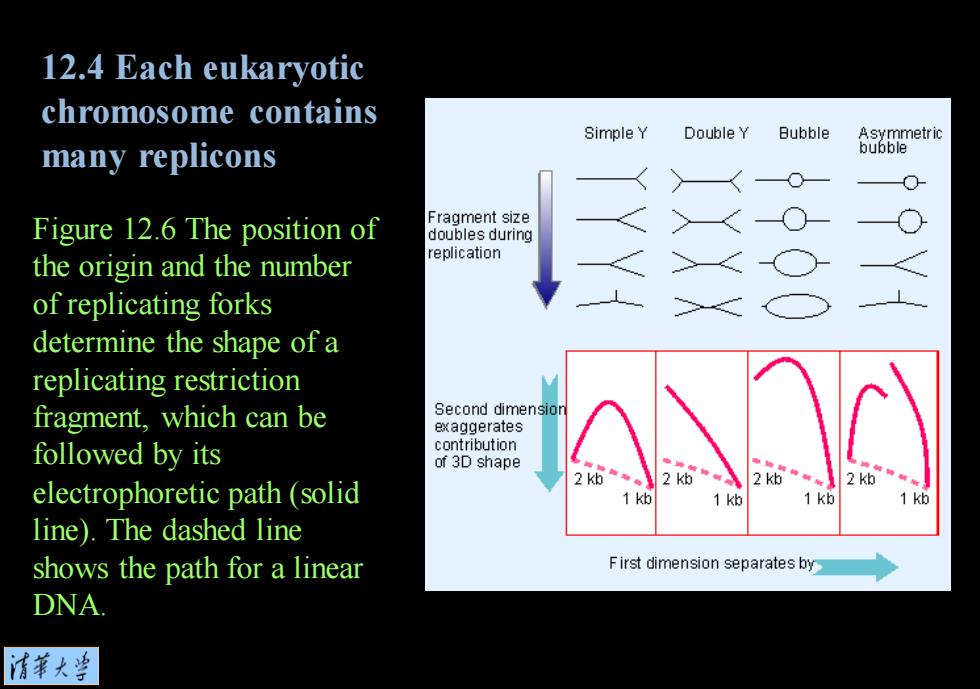
12.4 Each eukaryotic chromosome contains Simple Y Double Y Bubble many replicons bubble Figure 12.6 The position of Fragment size doubles during the origin and the number eplication of replicating forks determine the shape of a replicating restriction fragment,which can be Second dimensio exaggerates followed by its contribution of 3D shape 2k2k2kb】 2 kb electrophoretic path (solid 1 kb 1 kb 1kb 1 kb line).The dashed line shows the path for a linear First dimension separates by DNA. 清苇大当
Figure 12.6 The position of the origin and the number of replicating forks determine the shape of a replicating restriction fragment, which can be followed by its electrophoretic path (solid line). The dashed line shows the path for a linear DNA. 12.4 Each eukaryotic chromosome contains many replicons
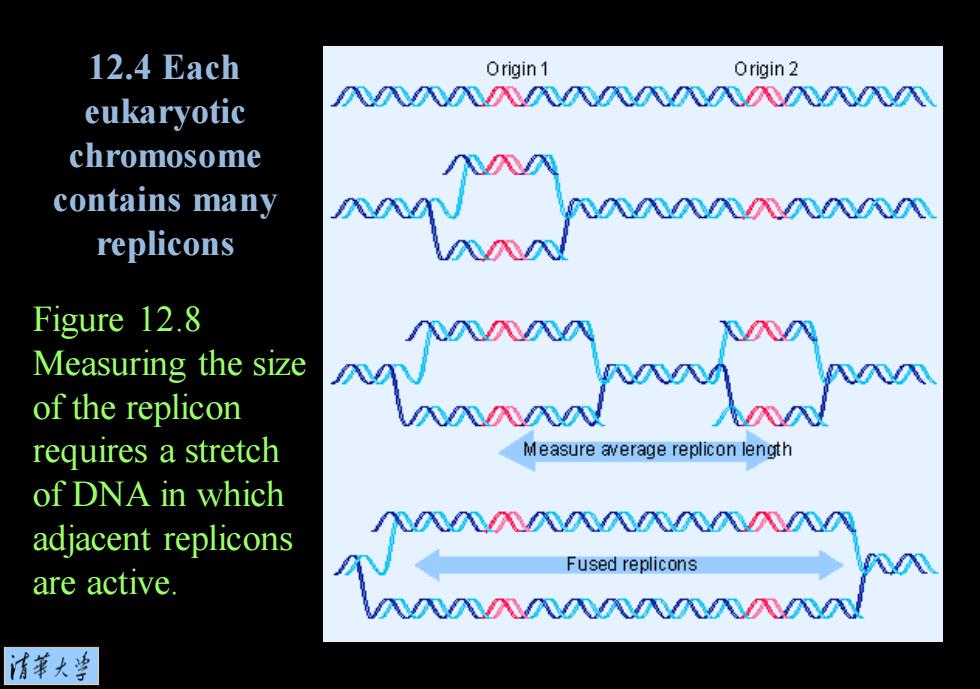
12.4 Each Origin 1 Origin 2 eukaryotic NNNN八NN风N000002000 chromosome contains many VVV八NMNN replicons Figure 12.8 Measuring the size of the replicon requires a stretch Measure average replicon length of DNA in which adjacent replicons NNNN八00202020入NN Fused replicons N are active. 入入NN风风入八不入N 情菜大兰
Figure 12.8 Measuring the size of the replicon requires a stretch of DNA in which adjacent replicons are active. 12.4 Each eukaryotic chromosome contains many replicons
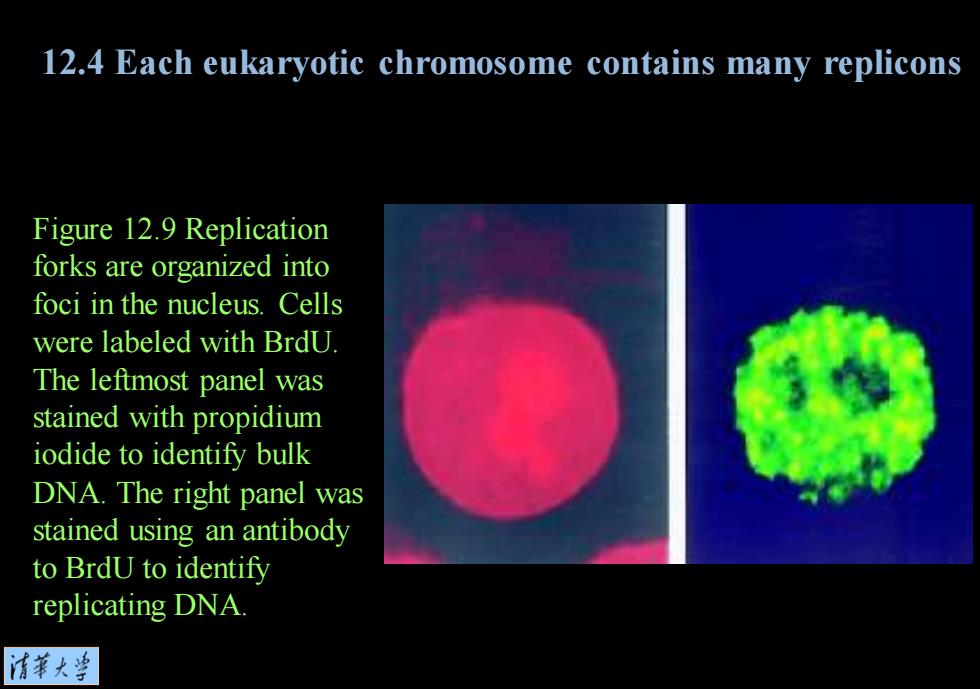
12.4 Each eukaryotic chromosome contains many replicons Figure 12.9 Replication forks are organized into foci in the nucleus.Cells were labeled with BrdU The leftmost panel was stained with propidium iodide to identify bulk DNA.The right panel was stained using an antibody to BrdU to identify replicating DNA. 清第大当
Figure 12.9 Replication forks are organized into foci in the nucleus. Cells were labeled with BrdU. The leftmost panel was stained with propidium iodide to identify bulk DNA. The right panel was stained using an antibody to BrdU to identify replicating DNA. 12.4 Each eukaryotic chromosome contains many replicons
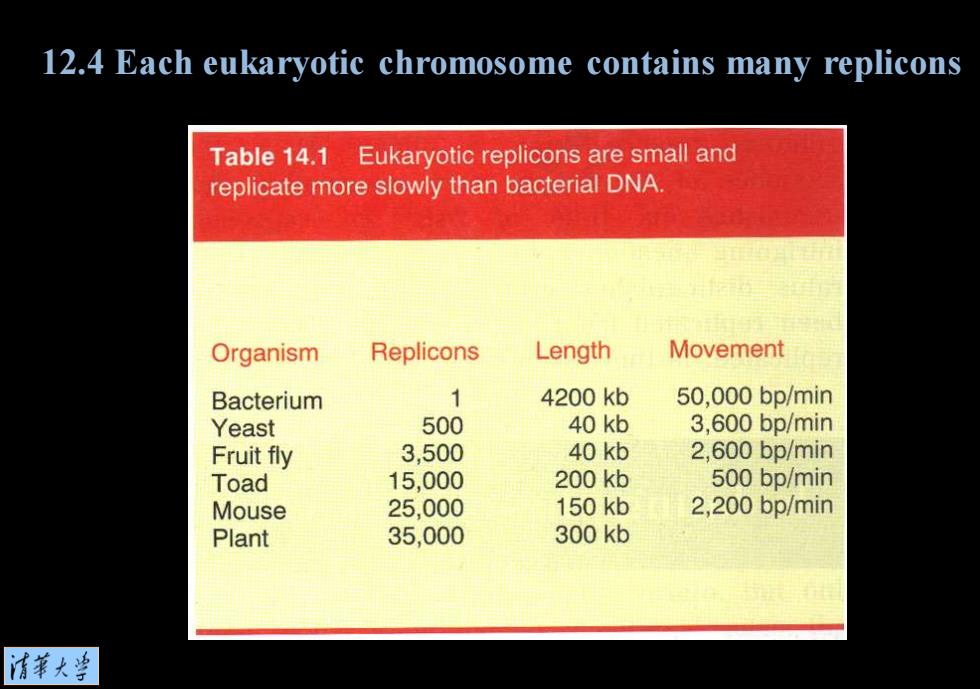
12.4 Each eukaryotic chromosome contains many replicons Table 14.1 Eukaryotic replicons are small and replicate more slowly than bacterial DNA. Organism Replicons Length Movement Bacterium 4200kb 50,000 bp/min Yeast 500 40 kb 3,600 bp/min Fruit fly 3,500 40 kb 2,600 bp/min Toad 15,000 200kb 500 bp/min Mouse 25,000 150kb 2,200 bp/min Plant 35,000 300kb 清菜大当
12.4 Each eukaryotic chromosome contains many replicons